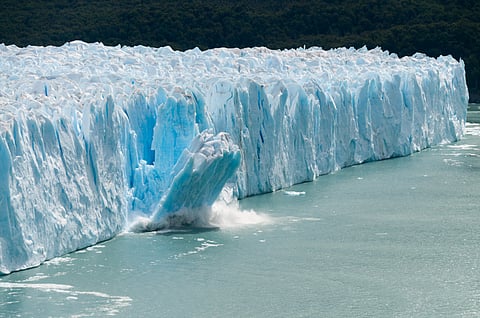

Global temperatures were poised to remain at or near record highs over the next five years, according to the World Meteorological Organization’s (WMO) latest Global Annual to Decadal Climate Update. The report, released May 28, 2025, underlined the dangers of the planet edging closer to irreversible climate thresholds, with the Arctic warming at more than three times the global average.
Between 2025 and 2029, the global average near-surface temperature was forecast to range between 1.2 degrees Celsius and 1.9°C above pre-industrial levels (1850-1900 baseline). Critically, there was an 86 per cent chance that at least one year in this period would exceed the Paris Agreement’s 1.5°C warming threshold.
The WMO also estimated a 70 per cent likelihood that the five-year average itself would cross the 1.5°C limit. While long-term warming averaged over decades remained below the line for now, the findings underscored how close the world was to breaching a key planetary boundary, even if temporarily.
2024 was confirmed as the hottest on record. Global temperatures were 1.55°C above the 1850-1900 average, with particularly intense heat recorded across the tropics, North America, North Africa, Europe and parts of Asia. The five-year period from 2020 to 2024 also experienced widespread warming, especially in the Arctic and over land areas, driven in part by La Niña conditons experienced over three consecutive years.
The report warned that there was now an 80 per cent chance that at least one year between 2025 and 2029 would surpass 2024’s record. Though extremely unlikely, there was even a 1 per cent chance of a single year exceeding 2°C of warming, a scenario that will have catastrophic consequences for ecosystems and human societies.
Arctic regions continued to bear the brunt of global heating, the WMOP stated. Predictions showed an average winter (November-March) temperature anomaly of 2.4°C over the next five years, which is more than three and a half times the global mean. Sea-ice concentrations in the Barents, Bering and Okhotsk seas were expected to decline further.
Shifts in global precipitation patterns were also anticipated. From May to September, wetter conditions were likely in the Sahel, northern Europe, Alaska and northern Siberia, while the Amazon basin faced a drier-than-average spell. For South Asia, the report projected a continuation of the recent trend of anomalously wet years, excluding 2023. However, not every season within 2025-2029 was expected to follow this trend.
Meanwhile, atmospheric pressures remained unusually low over Antarctica. The Aleutian Low, a major climate driver in the North Pacific, stayed weak during the 2020-2024 period, consistent with prolonged La Niña conditions.